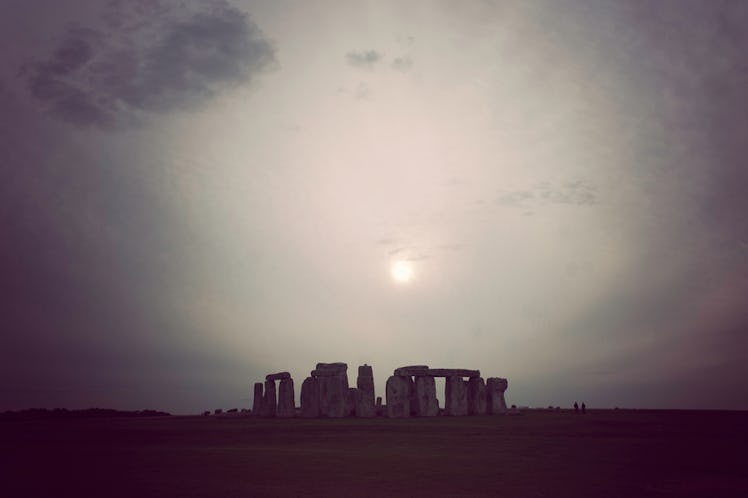
Winter Is Coming & This Is The Exact Time The Solstice Will Happen In The U.S.
The shortest day and longest night of the year has arrived, which means you’re either gearing up for an epic winter solstice soirée, milking the excuse to go to bed early tonight, or mourning the fact that it’s going to be just as dark when you leave work this afternoon as it was when you clocked in this morning. What’s interesting about the solstice is that we’re so focused on how many hours of sunshine we’ll reap, that the majority of us don’t even know when the winter solstice happens in the U.S. I’ll give you a hint though: It’s not at sunset.
Granted, the winter solstice happens once every year; it's not like the lunar eclipse that only makes an appearance every few years. But, in my opinion at least, the official start of winter definitely calls for celebration — as in the day-off-from-work, everybody-parties-in-their-pajamas type of celebration. I’m sure a lot of people would agree with this if they knew that, before turning in their vacation days for the end of the year, that the winter solstice isn’t necessarily an after-work activity. Ergo, science is going to do its thang with or without an audience, so enjoy your day at the office.
The winter solstice takes place at different times throughout the country.
To quote Game of Thrones, winter is coming, and it all starts with the solstice taking place in the Northern Hemisphere on Dec. 21 this year. According to TIME, astrologers say the winter solstice is the worst of times, symbolizing bad mojo as the sun will pass in front of the Capricorn constellation after Saturn takes a lap. But whether or not you believe in (or even understand) astrology, and no matter how you feel about the shortest day of the year and kickoff to the coldest season, one thing is certain: The winter solstice occurs at all different times throughout the six time zones across the U.S.
In the Pacific Time Zone, the winter solstice occurs at exactly 8:28 a.m., just early enough to enjoy on the ride into the office or school. In the Mountain Time Zone, the solstice happens at 9:28 a.m., 10:28 a.m. for the Central Time Zone, and 11:28 a.m. in the Eastern Time Zone. Basically, the solar system’s big moment is over and done with by the time you’ve rolled out of bed, showered, sat through a meeting or class, and poured yourself a second cup of coffee.
Unfortunately, it's nearly impossible to catch the winter solstice in action.
I know I said we should all take a day off from work, or take a break from studying for finals to celebrate the winter solstice and, for the record, I stand by that. But you know how the lunar eclipse was more or less visible depending on your location? Well, it turns out it actually doesn’t matter where you are in the world for this scientific event: You’re likely not seeing a damn thing.
Unless you stake out and dedicate your entire morning to keeping your eye on the sky without blinking, good luck getting a photo of the winter solstice at its prime. Bustle reports that the sun will haze over the Tropic of Capricorn for one minute and one minute only, if that. Plus, the movement itself is so minor that even if you’re staring directly at the change in position, you probably won’t realize it.
Having said that, I really hope you didn't up and waste your dollars on a trip to any of the temples or historical monuments that were designed for optimal winter solstice viewing, only to find out you can't really see the solstice happening. Although, I guess you'd still enjoy a pretty great view of the first winter sky of the season.
But hey, look on the bright side: If you do happen to be spending Dec. 21 at Stonehenge in England, the Karnak Temple in Egypt, or Newgrange in Ireland, while you may not necessarily witness a winter solstice with the naked eye, it's still an epic way to end off 2017.